Wildflowers of the Adirondacks:
Twinflower (Linnaea borealis)
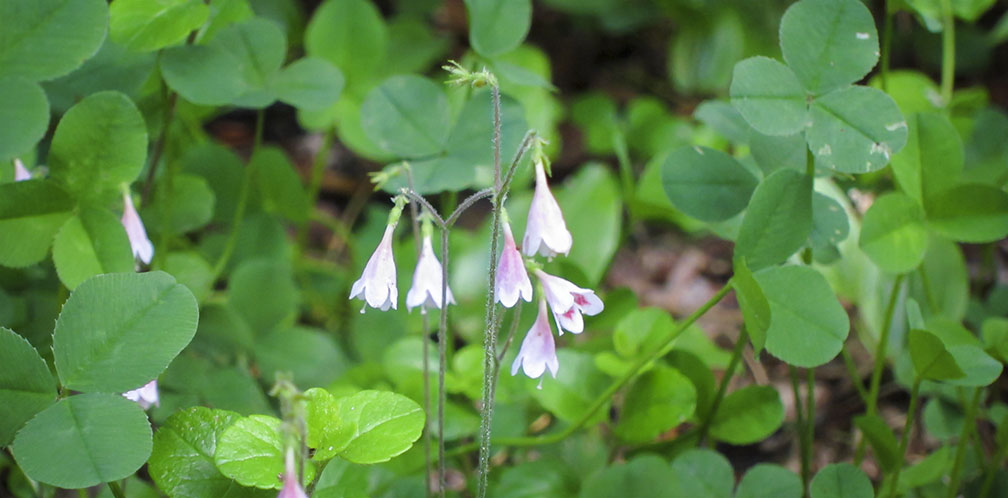
Twinflower (Linnaea borealis L.) is a miniature, evergreen creeping plant that produces pairs of fragrant pink, bell-like flowers in late spring or early summer. It can be found on both wet and well-drained soils in conifer and mixed woods forests in the Adirondack Park.
Twinflower has long been categorized as a member of the Caprifoliaceae (Honeysuckle) family, which also includes the genus Linnaea. Twinflower is the only member of the Linnaea genus which occurs in New York State.
- The Integrated Taxonomic Information System, based on research from the late nineties, now assigns Twinflower to the Linnaeaceae family.
- However, many sources (including the US Department of Agriculture and the New York Flora Atlas, still categorize this plant as belonging to the Caprifoliaceae family.
The genus name (Linnaea) is a reference to Carl Linnaeus, a Swedish botanist, physician and zoologist, born in 1707, who formalized the modern system of naming organisms called binomial nomenclature. He is widely considered to be the father of modern botany. The species name (borealis) means "northern" – a reference to the plant's geographic distribution.
The common name (Twinflower) is a reference to the fact that the small, bell-like pink flowers appear in pairs. Other common names include American Twinflower and Northern Twinflower.
Identification of Twinflower
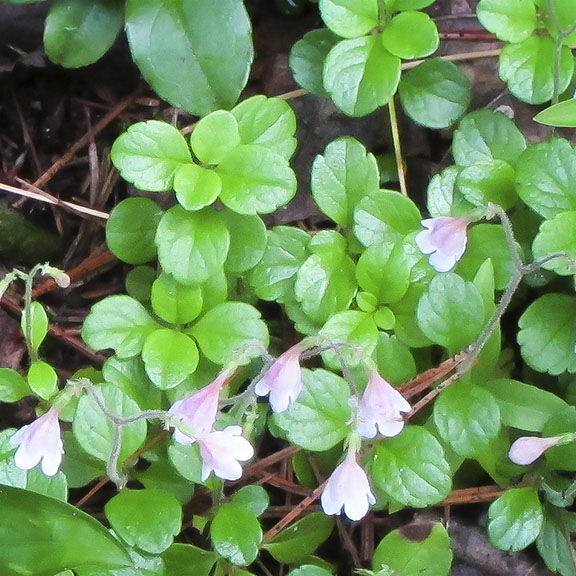
Twinflower is an evergreen plant three to six inches tall. Its growth form is creeping, with numerous short stems rising from the stolon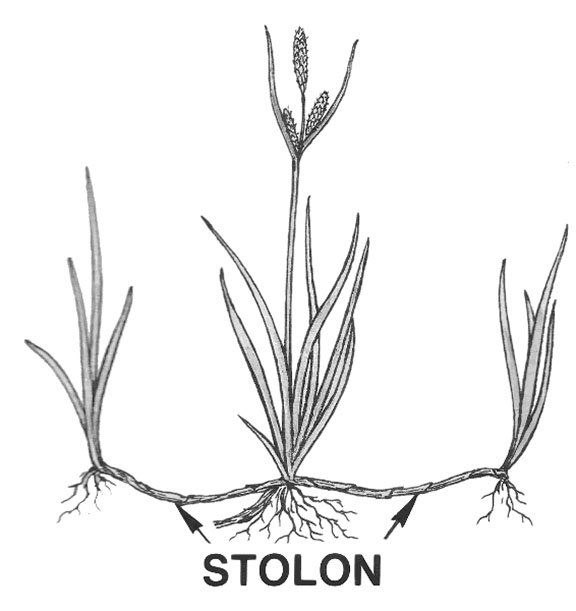 Stolon: A horizontal stem growing along surface or just above or below the ground, rooting at intervals and giving rise to new plants..
Stolon: A horizontal stem growing along surface or just above or below the ground, rooting at intervals and giving rise to new plants..
Twinflower leaves are round, shiny, and slightly leathery. The leaves are opposite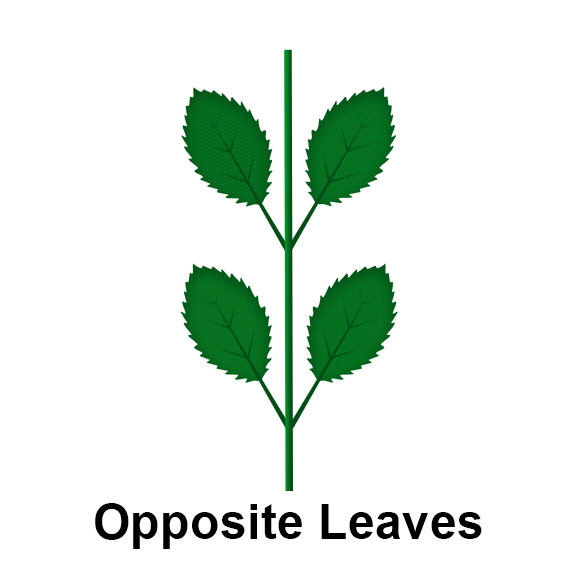 Opposite Leaves - leaves occurring in pairs at a node, with one leaf on either side of the stem., meaning that that are two leaves per node along the stem. The leaves are light green and small, about ½ inch wide and ½ to one inch long. The leaf margins
Margin: The structure of the leaf's edge.
(edges) are shallowly scalloped toward the tip.
Opposite Leaves - leaves occurring in pairs at a node, with one leaf on either side of the stem., meaning that that are two leaves per node along the stem. The leaves are light green and small, about ½ inch wide and ½ to one inch long. The leaf margins
Margin: The structure of the leaf's edge.
(edges) are shallowly scalloped toward the tip.
The flowers are pink to white, bell-like, and nodding.
- The flowers are appear in pairs on short, Y-shaped stalks. The flower stalks are short, upright, and hairy.
- The flowers are fragrant and last about seven days.
- The flowers are about ½ inch long and funnel-shaped. They are hairy inside and have four stamens
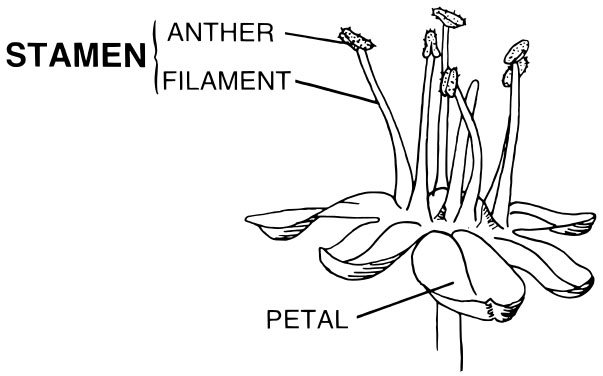 Stamen: The male part of the flower, made up of the filament and anther..
Stamen: The male part of the flower, made up of the filament and anther..
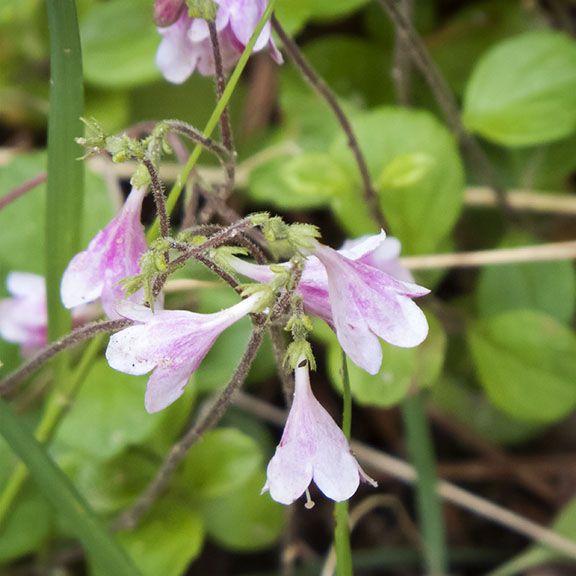
In the Adirondack region, Twinflower usually begins blooming in early- to mid-June. A tally for the upland Adirondack areas compiled by Michael Kudish, based on data collected from the early seventies to the early nineties, lists the bloom time as 16 June into July. These dates are consistent with more recent data on bloom times for this species in the Adirondack Park. Twinflower has also been seen in bloom in our area in September, although this appears to be quite unusual.
Twinflower fruit is a small capsule with one seed that changes from green to tan or brown. The fruit appears about 36 days after flowering.
Uses of Twinflower
Twinflower has not been used extensively as either food or medicine. A number of native American groups used Twinflower to treat various ailments. The Algonquin, for instance, used an infusion of the entire plant as a tonic for pregnant women. The Iroquois made a decoction of twigs to give to children with fever or cramps. The Snohomish used a decoction of leaves as a cold remedy.
Wildlife Value of Twinflower
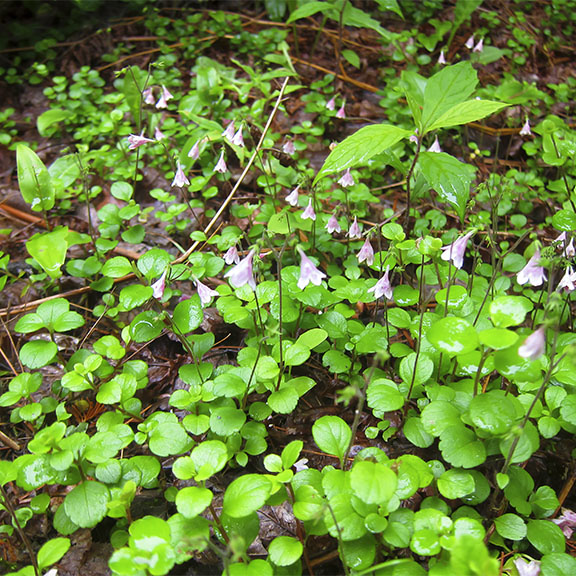
Although this plant reportedly provides a supplement to the winter diets of hoofed animals in Alaska and the western US, Twinflower has minimal value as food or cover for wildlife in the Adirondacks. Insect visitors to Twinflower include both long- and short-tongued bees, as well as wasps, sawflies, flies, skippers, and beetles. In addition, the Yellow-bellied Flycatcher, a ground nester, builds its nest in microclimates where Twinflower is part of the local ground cover.
Distribution of Twinflower
Twinflower is found in Canada and the northern third of the US, south to Pennsylvania and West Virginia, Illinois, and Wisconsin and west to the Dakotas. This plant is listed as Extirpated in Indiana; Threatened in Iowa and Pennsylvania, Endangered in Maryland and New Jersey, Presumed Extirpated in Ohio, Possibly Extirpated/Endangered in Tennessee; and Historical in Rhode Island.
Twinflower is found in most counties in the northeastern two-thirds of New York State. It occurs in all counties within the Adirondack Park Blue Line.
Habitat of Twinflower
Twinflower is rather flexible in terms of both sunlight and moisture requirements.
- It can tolerate a wide spectrum of light intensity, growing in both unshaded and shaded sites.
- Twinflower can flourish in dry to wet soils of a variety of textures.
- As a result, Twinflower appears to have no particular habitat preference. It can be found in cool coniferous to mixed woods forests, on hummocks in cool swamps, in rocky woodlands, on mountain slopes, and on mosses in thin soil and decaying logs.
Twinflower can be seen along the Barnum Brook Trail at the Paul Smith's College VIC. Look for it growing near Wild Sarsaparilla, Canada Mayflower, Bunchberry, and Starflower.
References
Michael Kudish. Adirondack Upland Flora: An Ecological Perspective (The Chauncy Press, 1992), p. 191.
New York Flora Association. New York Flora Atlas. Twinflower. Linnaea borealis L. ssp. longiflora (Torr.) Piper & Beattie. Retrieved 30 January 2018.
Integrated Taxonomic Information System. Linnaea borealis L. Retrieved 30 January 2018.
United States Department of Agriculture. The Plants Database. Twinflower. Linnaea borealis L. Retrieved 30 January 2018.
United States Department of Agriculture. Fire Effects Information System (FEIS). Species Reviews. Linnaea borealis. Retrieved 30 January 2018.
United States Department of Agriculture. Forest Service. Plant of the Week. Twinflower. Linnaea borealis. Retrieved 30 January 2018.
NatureServe Explorer. Online Encyclopedia of Life. Twinflower. Linnaea borealis - L. Retrieved 30 January 2018.
New England Wildflower Society. Go Botany. American twinflower. Linnaea borealis L. Retrieved 30 January 2018.
New York State. Adirondack Park Agency. Preliminary List of Species Native Within the Adirondack Park Listed Alphabetically by Scientific Name and Sorted by Habit. Volume 1. Updated 10.23.2006, p. 26. Retrieved 26 January 2017.
USA National Phenology Network. Nature’s Notebook. Linnaea borealis. Retrieved 30 January 2018.
Connecticut Botanical Society. Twinflower. Linnaea borealis L. Retrieved 30 January 2018.
University of Wisconsin. Flora of Wisconsin. Linnaea borealis. Retrieved 30 January 2018.
Minnesota Wildflowers. Linnaea borealis. Twinflower. Retrieved 30 January 2018.
Illinois Wildflowers. Insect Visitors of Illinois Wildflowers. Flower-Visiting Insects of Twin-Flower. Retrieved 30 January 2018.
Lady Bird Johnson Wildflower Center. Linnaea borealis L. Retrieved 30 January 2018.
Anne McGrath. Wildflowers of the Adirondacks (EarthWords, 2000), p. 28, Plate 14.
Roger Tory Peterson and Margaret McKenny. A Field Guide to Wildflowers. Northeastern and North-central North America (Houghton Mifflin Company, 1968), pp. 236-237.
Doug Ladd. North Woods Wildflowers (Falcon Publishing, 2001), pp. 4, 72.
Lawrence Newcomb. Newcomb's Wildflower Guide (Little Brown and Company, 1977), pp. 284-285.
Meiyin Wu & Dennis Kalma. Wetland Plants of the Adirondacks: Herbaceous Plants and Aquatic Plants (Trafford Publishing, 2011), p. 77.
David M. Brandenburg. Field Guide to Wildflowers of North America (Sterling Publishing Company, Inc., 2010), p. 191.
John Kricher. A Field Guide to Eastern Forests. North America (Houghton Mifflin, 1998), p. 62.
Timothy Coffey. The History and Folklore of North American Wildflowers (FactsOnFile, 1993), pp. 232-233.
William Carey Grimm. The Illustrated Book of Wildflowers and Shrubs (Stackpole Books, 1993), p. 256.
National Audubon Society. Field Guide to North American Wildflowers. Eastern Region. (Alfred A. Knopf, 2001), pp. 456-457, Plate 463.
William K. Chapman et al. Wildflowers of New York in Color (Syracuse University Press, 1998), pp. 60-61.
Plants for a Future. Linnaea borealis - L. Retrieved 30 January 2018.
Steven Foster and James A. Duke. Medicinal Plants and Herbs of Eastern and Central North America (Houghton Mifflin Harcourt, 2014), pp. 172-173.
University of Michigan. Native American Ethnobotany. A Database of Foods, Drugs, Dyes and Fibers of Native American Peoples, Derived from Plants. Twinflower. Linnaea borealis L. Retrieved 30 January 2018.
The Cornell Lab of Ornithology. Birds of North America. Subscription web site. Yellow-bellied Flycatcher. Empidonax flaviventris. Retrieved 30 January 2018.
Nancy G. Slack and Allison W. Bell. Adirondack Alpine Summits: An Ecological Field Guide (Adirondack Mountain Club, Inc., 2006), p. 26.
Allen J. Coombes. Dictionary of Plant Names (Timber Press, 1994), p. 107.
Charles H. Peck. Plants of North Elba. (Bulletin of the New York State Museum, Volume 6, Number 28, June 1899), p. 101. Retrieved 22 February 2017.
A. Backlund and N. Pyck, "Diervillaceae and Linnaeaceae, two new families of caprifolioids," Taxon, Volume 47, Number 3 (August 1998), pp. 657-661. Retrieved 1 February 2018.
